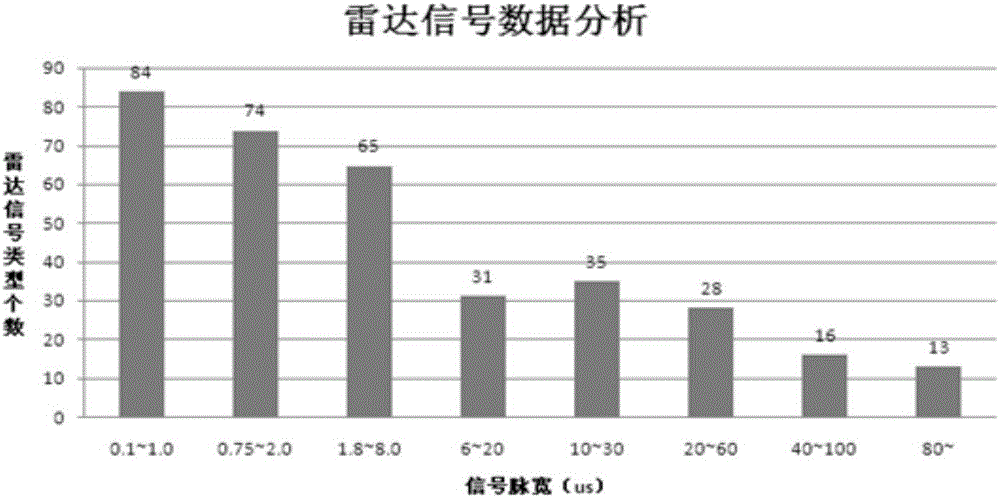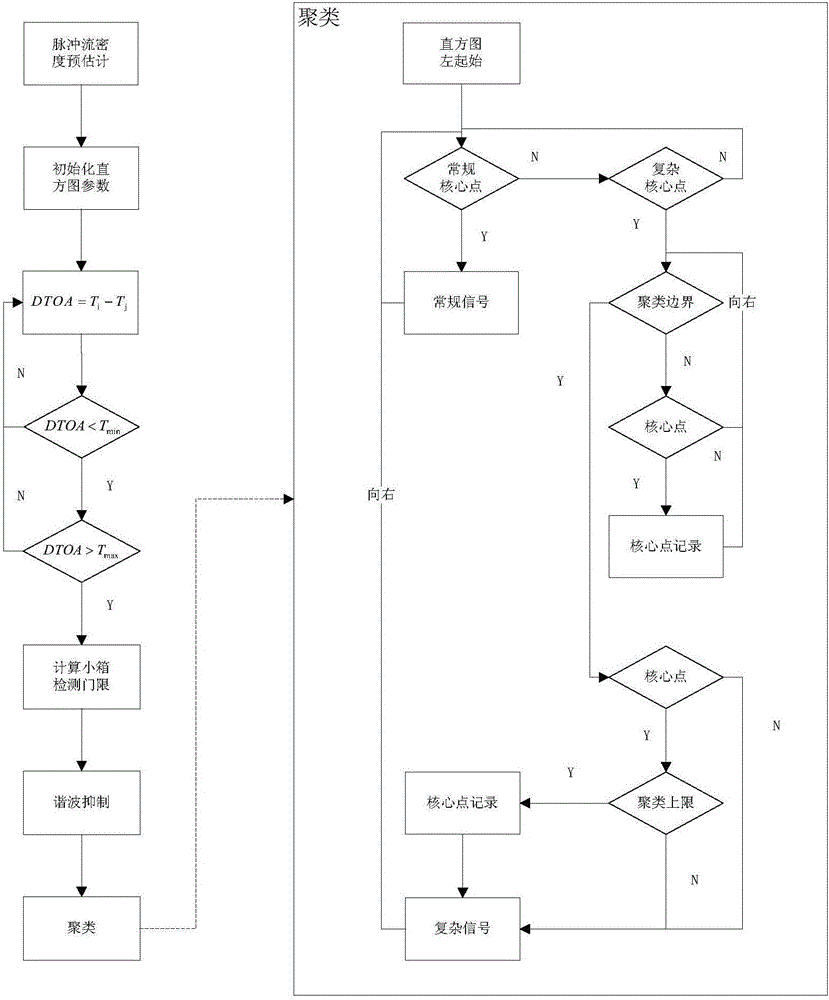Complex system radar signal grade correlating, clustering and sorting method
A radar signal and system technology, applied in the field of signal sorting, can solve the problems that affect the time-domain clustering input, cannot adapt to radar signals, and it is difficult to count the staggered values
- Summary
- Abstract
- Description
- Claims
- Application Information
AI Technical Summary
Problems solved by technology
Method used
Image
Examples
Embodiment Construction
[0007] Realize that the specific implementation steps of the present invention are as follows:
[0008] (1) Hierarchical correlation clustering method in frequency domain and pulse width domain based on radar signal characteristics
[0009] The main purpose of frequency domain and pulse width domain clustering is to dilute the pulse data stream and prepare for the subsequent time domain clustering. Clustering in the frequency domain and pulse width domain should be based on the following two principles: (1) Classify the data belonging to the same radiation source into the same category as much as possible. (2) Separate data that do not belong to the same radar radiation source as much as possible. Among them, the first principle is more important than the second; the second principle is to be satisfied as much as possible while satisfying the first. If there is no constraint of the second principle and only the first principle is followed, it is clear that it is acceptable t...
PUM
 Login to View More
Login to View More Abstract
Description
Claims
Application Information
 Login to View More
Login to View More - R&D
- Intellectual Property
- Life Sciences
- Materials
- Tech Scout
- Unparalleled Data Quality
- Higher Quality Content
- 60% Fewer Hallucinations
Browse by: Latest US Patents, China's latest patents, Technical Efficacy Thesaurus, Application Domain, Technology Topic, Popular Technical Reports.
© 2025 PatSnap. All rights reserved.Legal|Privacy policy|Modern Slavery Act Transparency Statement|Sitemap|About US| Contact US: help@patsnap.com


